The Pulasan (pulasan in English, Spanish and Malay, kapulasan in Indonesia, ngoh-khonsan in Thailand, and bulala in the Philippines) is a very strange looking fruit I’d never seen before I saw it in a market in Malaysia. It looks like somewhat like a nut or pine cone but is in reality, a very tasty fruit which is quite similar to the Rambutan and the Lychee. I knew when I saw it, I had to try it.
How to eat a Pulasan
The name ‘pulasan’ comes from the Malay word ‘pulas’ (to twist) and that’s how you open it.
Unlikely the Rambutan, which requires a fingernail to pierce the skin, all you need to do to open a Pulasan is to grab the strange looking skin of the fruit between your thumb and finger of both hands and twist.
The skin will easily break revealing a juicy white flesh.
Once the fruit is exposed, pop it into your mouth and nibble the flesh from the large inedible pit. The texture of Pulasan is different from Rambutan and I’ve found it much harder to get the fruit off the pit unless the Pulasan is what I would call over ripe.
How Does a Pulasan Taste?
Though the outside of looks strange or even like the Pulasan should be inedible, it is actually very tasty.
The fruit itself tastes similar to Rambutan but it is both sweeter and juicier. It’s fruit is also softer and more jelly-like unlike the Rambutan which is easy to take a bite from.
While I can’t say which of these fruit are my favorite, the Pulasan is now a strong contender among the ranks of Rambutan and Lychee.
 Where's WiL My around the world solo travel blog
Where's WiL My around the world solo travel blog
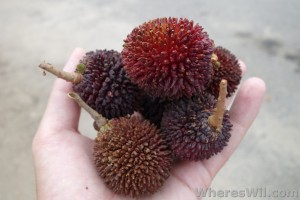
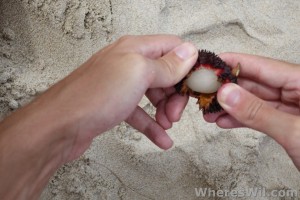
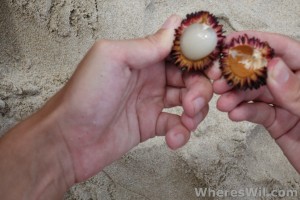
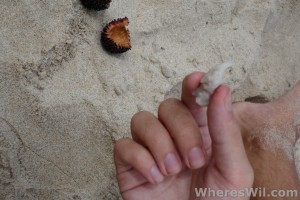

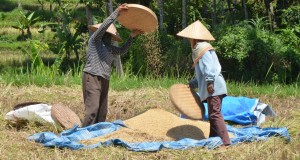


I wants buy a tree pulasan